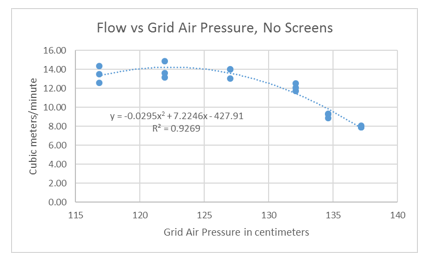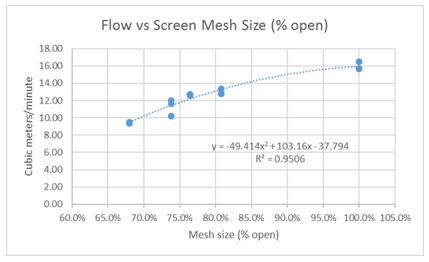EVALUATING SCREEN MESH SIZE AND GRID DEPTH ON FLOW RATE OF A FLOATING RACEWAY
The rate at which water flows through a floating raceway is critical to its function. Flow rate supports water quality by transporting dissolved oxygen into the raceway and removing waste. Flow rate may vary with design of the water-moving device and the use of screens. Screens ensure fish retention, but also create resistance to flow.
A Superior Raceway Model 11000 floating raceway was installed in a 0.8 ha pond. It was fitted with an adjustable airlift grid to vary grid depth, resulting in air pressure between 117 and 137 centimeters of water. Air was supplied by a 1 HP regenerative blower. Regression analysis of grid depth and respective flow rate reveals best fit with a second-degree polynomial and has a correlation of 92%. Average flow rate ranged from 7.97 m3/min (137 cm water) to 13.87 m3/min (122 cm water).
Screens (1.2m x 1.8 m) were placed at the inlet and outlet of the raceway. Screen mesh was rated by the percentage of open area: 100% (no screen), 80.8%, 76.4%, 73.8%, and 68%. Regression analysis of screen mesh and flow rate also fits a second-degree polynomial and has a correlation of 95%. Average flow rate ranged from 9.45 m3/min (68% open) to 15.96 m3/min (100% open).

